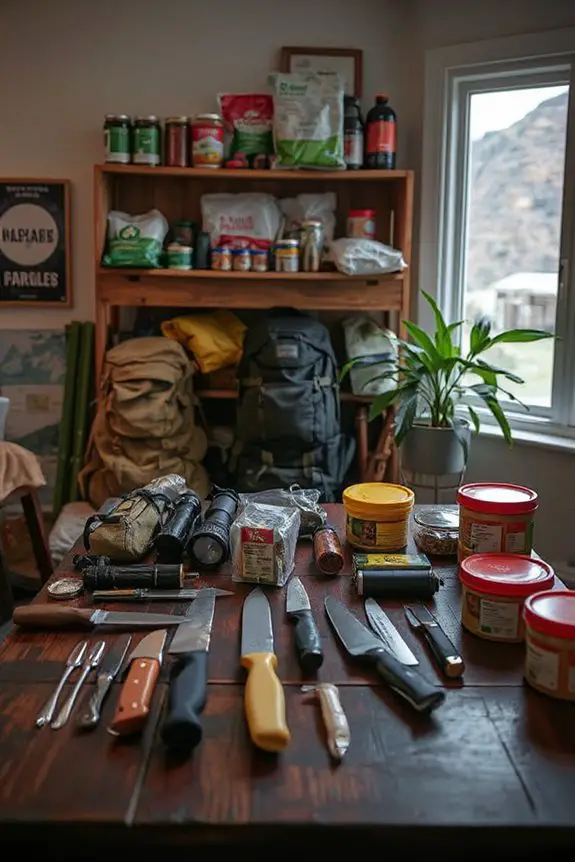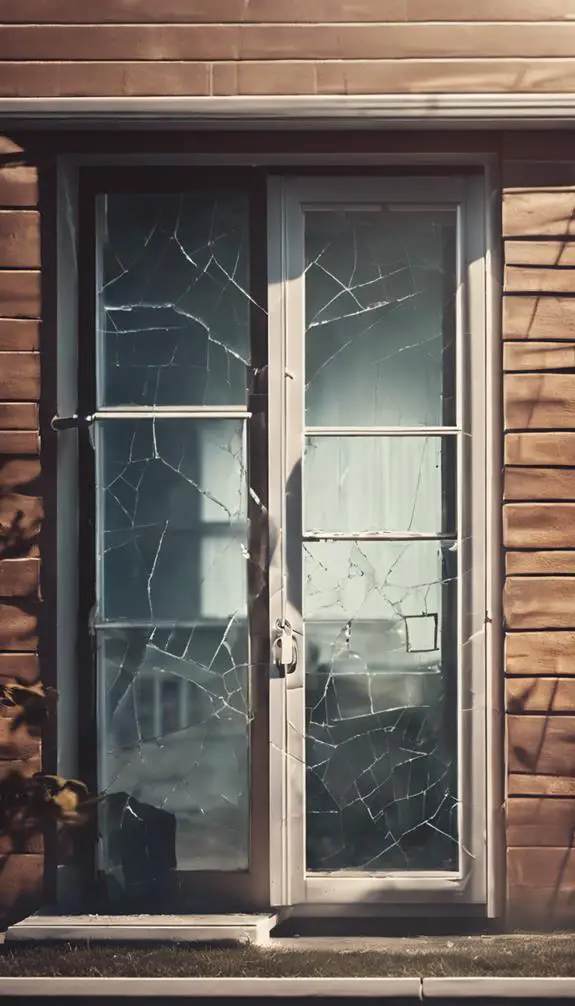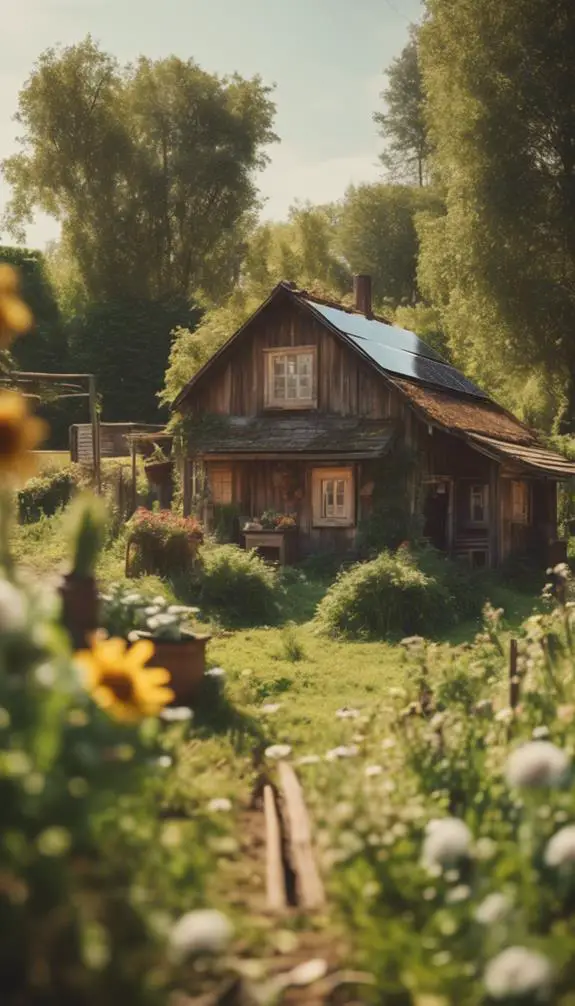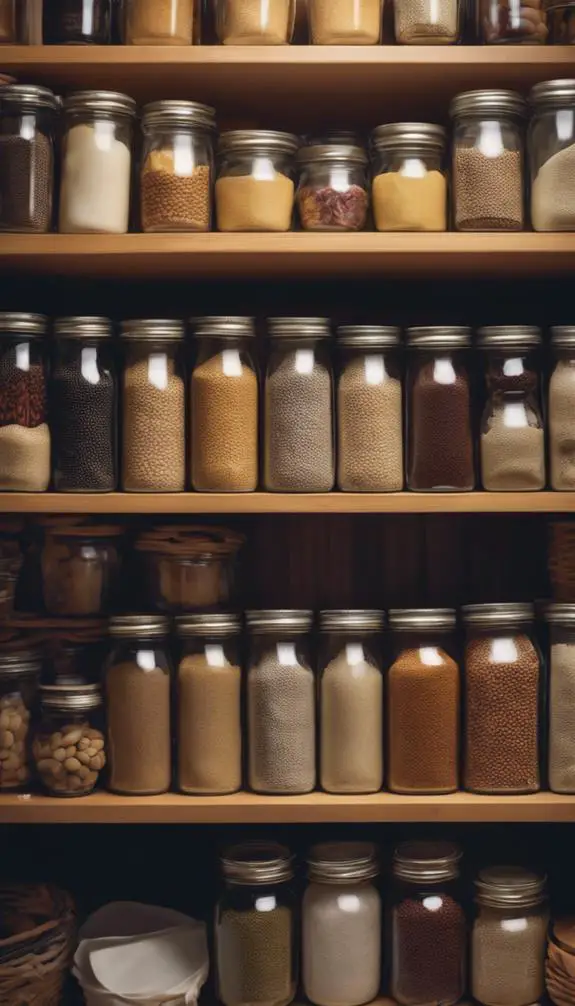So, you want to jump headfirst into prepping overnight? Buckle up. It’s not just about stockpiling cans of beans and a couple of flashlights. You need to assess your situation—know your risks. Got a plan? If not, time to whip one up, stat. Start gathering supplies—food, water, first aid—whatever you can grab. But don’t just throw it all in a box. It’s gotta be organized. Ready to get into the nitty-gritty of survival skills and community connections? Let’s go.
Summary
- Assess your current environment and available resources to identify immediate prepping needs and potential risks.
- Create a basic emergency plan with communication methods, meeting locations, and prioritized preparations.
- Start building a supply kit with essential items like food, water, first aid, and tools for at least one week.
- Learn essential skills such as first aid, self-defense, and practical survival techniques to enhance your preparedness.
- Stay informed through news alerts and survival literature to keep your knowledge and plans relevant.
Assess Your Current Situation

Before you dive headfirst into prepping, let’s take a hard look at where you’re at right now.
What’s your current environment like? Is it a peaceful suburb or a crowded city? You need to know what you’re dealing with.
Then there’s resource availability—what do you have on hand? Pantry stocked, or just a sad can of soup?
Get real about your strengths and weaknesses. Assess your skills, too. Can you start a fire or fix a leaky sink?
You can’t prep effectively if you don’t know what’s in your arsenal. So, take a moment and lay it all out. Understanding emergency risks in your area is crucial to tailoring your prepping efforts.
Create a Basic Emergency Plan

So, you’ve assessed your risks—great start!
Now, let’s whip up an emergency plan that actually works. You need clear communication methods and designated meeting spots, or else you’ll be like a headless chicken running around when disaster strikes. Additionally, conduct a risk assessment to identify potential hazards in your home and prioritize preparations based on essential needs.
Assess Your Risks
When life throws a curveball, are you ready to catch it or just let it hit you?
Let’s face it: ignoring risks is like cooking without seasoning—bland and dangerous. Start with a solid risk evaluation.
What’s lurking in your world—natural disasters, power outages, or social chaos? That’s your threat analysis. Jot it down, folks! Identify what could go wrong and how you’ll tackle it.
Be real, get gritty. It’s not about freaking out; it’s about mapping your survival route. So, grab a pen, sketch out your fears, and turn ‘em into a game plan. Remember, being prepared increases your chances of survival during SHTF events and helps you thrive post-disaster.
Ready to spice up your prep? Let’s do this!
Establish Communication Methods
Communication is key, especially in a crisis—because what good is a survival plan if no one knows it exists? You’ve gotta nail down your communication devices. Think walkie-talkies, burner phones, or even good ol’ smoke signals if you’re feeling nostalgic.
Next, compile a list of emergency contacts. Friends, family, neighbors—everyone who needs to be in the loop. Don’t just hope they’ll remember; share this info like it’s the secret sauce to grandma’s chili.
Practice your plan, too. When chaos hits, you won’t have time to figure it out. Get it together now, or risk being utterly cut off. No thanks! Consider incorporating ham radios into your communication methods, as they provide reliable communication in emergencies.
Designate Meeting Locations
You need to nail down meeting locations—this isn’t just a cute idea; it’s essential.
Think about it: when chaos hits, where do you go? I always designate safehouses well in advance. Pick spots that are easy to remember and get to, like a friend’s house or a local park.
Don’t forget about emergency rendezvous points—these can be lifesavers. Make sure everyone in your crew knows them, because when the world’s gone haywire, you don’t have time to play hide-and-seek. Establishing these locations is a critical component of family and home preparedness strategies, ensuring everyone knows where to regroup and stay safe.
Trust me, planning this out now is way better than scrambling later. So, get to it!
Start Building Your Supply Kit

Building a supply kit isn’t just a task; it’s a mission. Seriously, you can’t wing this!
First, grab your supply essentials—think food, water, first aid, and tools. You’ll want enough to keep you going for at least a week.
Next, get your kit organization on point. Use clear bins or bags; don’t play hide-and-seek with your gear! Label everything, because when panic hits, you don’t want to rummage through chaos.
And hey, don’t forget to rotate items—expired food isn’t a badge of honor! Regularly check expiration dates to ensure your supplies remain effective during emergencies.
Ready to crush it? Let’s get to work, soldier! Your future self will thank you.
Learn Essential Skills
So, you’ve got your supply kit ready to roll. Now, it’s time to sharpen those essential skills.
First aid? Don’t just know how to slap on a Band-Aid! Immerse yourself in CPR, wound care, and how to handle shock. You mightn’t be a superhero, but knowing how to save a life is pretty darn close.
And self-defense? Yeah, it’s not just for the movies. Learn some basic moves to keep yourself safe. For instance, consider training in Krav Maga, which emphasizes practical techniques for real-world threats. You can’t always count on someone else to swoop in.
Get training, practice, and remember, it’s not about being a fighter—it’s about staying alive. Now go get after it!
Connect With Your Community
Community connections are like the secret ingredient in your prepping recipe. Seriously, you can stockpile all the canned beans you want, but without local events and community resources, you might as well be marinating in isolation.
Join neighborhood groups, hit up farmers’ markets, or attend workshops. You’ll find folks with skills you need—like canning, gardening, or self-defense. Plus, who wouldn’t want a buddy system for those emergency situations?
Stay Informed and Educated
Staying informed isn’t just a nice-to-have; it’s essential, folks.
I keep my eyes glued to news sources that actually matter and devour survival literature like it’s the last slice of pizza at a party.
You wouldn’t show up to a cook-off without knowing the secret ingredients, right?
Follow Relevant News Sources
In the chaotic kitchen of life, keeping an eye on the news is like seasoning your favorite dish—it can make or break the flavor. I’m not talking about scrolling aimlessly; I’m talking news alerts from trusted sources.
You need to know what’s simmering in the world—natural disasters, political chaos, economic shifts. Are you really prepared if you’re clueless?
I grab updates from reliable apps and websites, and I don’t hesitate to filter out the noise. Trust me, it’s essential.
Read Survival Literature
You can’t just rely on news alerts to keep your prepper game sharp; you’ve gotta dig into survival literature like it’s the secret recipe for the ultimate chili.
Grab those survival manuals and wilderness guides, immerse yourself, and soak up every juicy detail. They’re packed with tips that could save your skin when the chips are down.
Ever tried starting a fire with nothing? It’s a wild ride, trust me. You’ll laugh, you’ll cringe, you’ll wonder how you ever thought you could wing it.
Review and Update Your Preparedness Plan
When was the last time I took a hard look at my preparedness plan? Seriously, if I’m not reviewing it regularly, I’m just asking for trouble.
I’ve gotta schedule those emergency drills like they’re date night—no excuses!
And let’s talk plan revisions. Change happens, folks! What worked last month mightn’t cut it today.
I update my gear, tweak my strategies, and maybe even swap out that dusty canned soup.
Don’t let your plan gather cobwebs; it’s not a relic, it’s my lifeline.
FAQs
What Is the Best Way to Store Food Long-Term?
Wanna store food long-term? Trust me, you can’t go wrong with canning techniques and freeze drying.
Canning’s like putting a time capsule in a jar—seal in that flavor! Get your pressure canner and start with low-acid foods.
Freeze drying? It’s a game-changer. You’ll keep nutrients intact. Stack those bags in a cool, dark place.
Seriously, it’s not rocket science. Just jump in and watch your pantry transform into a survival stash!
How Do I Choose the Right Bug-Out Location?
Choosing the right bug-out location? Think remote properties—away from prying eyes.
I look for spots with natural resources: water, wildlife, and good soil. Seriously, you can’t live on air!
Is it defensible? What’s the escape route? Trust me, no one wants to be stuck in a pinch.
If you can’t make a fire or grow food there, you’re setting yourself up for failure.
Get smart, scout it out, and don’t settle.
What Are Essential Tools for Preppers to Have?
Alright, let’s get real. Essential tools? You need survival gear that packs a punch.
Think multi-tools, sturdy knives, and a solid first-aid kit—don’t skimp on that!
Emergency supplies? Water filters and portable stoves are non-negotiables.
Ever tried boiling water over a campfire with no pot? Yeah, not fun.
So, stock up on flashlights, batteries, and food rations.
Get your act together; the wilderness isn’t a spa day.
Are you ready or just playing house?
How Can I Practice Survival Skills Safely?
Wanna practice survival skills safely? Immerse yourself in survival games! They’re like a playground for prepping.
I’ve had a blast at outdoor workshops, learning everything from fire-starting to foraging. Seriously, you can’t beat hands-on experience.
Grab a buddy, or go solo, and don’t be afraid to mess up. It’s all part of the game.
Just remember: it’s not about perfection; it’s about getting gritty, learning, and having fun.
What Are Common Prepper Misconceptions?
Let’s clear the air: prepper stereotypes are wild. You don’t need a bunker or a beard to be a prepper.
Survival myths? They’re everywhere! People think it’s all about canned beans and doomsday scenarios. Nope! It’s about being smart, staying prepared, and knowing your stuff.
I’ve learned it ain’t about paranoia; it’s about practicality. So, ditch those ridiculous notions.
Real prepping? It’s just common sense with a side of readiness. Got it?
Conclusion
So, are you ready to take the plunge into prepping? Don’t overthink it—get your plan in place, stock up on supplies, and learn those survival skills. Your peace of mind is worth the hustle. And hey, embrace the chaos! The world’s unpredictable, but with a solid prepper mindset, you’ll be ready to tackle anything. So grab your gear, rally your neighbors, and let’s kick complacency to the curb. Because being prepared? That’s the real power move.




